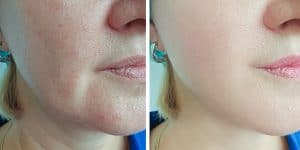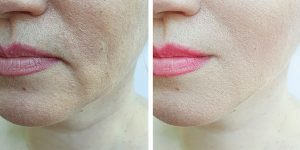Is there a difference between Profhilo and fillers? In the quest to remain youthful and beautiful, an increasing number of people are turning to injectable treatments to reverse indications of aging, with Profhilo and fillers being two popular options. However, despite their similarities, the two anti-aging treatments are vastly different. So, let’s have a look at them one by one.
What exactly is Profhilo?
Profhilo is referred to as an “acceptable injectable.” It’s the newest injectable on the block, and it’s designed to combat dullness and all of the things that come with age, such as lines and wrinkles, skin laxity, and skin laxity/loss of fullness. And, like other fillers, hyaluronic acid is the key ingredient, with hyaluronic acid injected into ten various areas of the face.
With just one gram containing up to 6 liters of water, hyaluronic acid offers unrivaled moisturizing properties when it comes to hydrating your skin. It’s difficult to think of a better approach to give your skin a hydration boost. The treatment also enhances collagen and elastin, two important components of bouncy, plump skin, over time. Yes, yes, and yes! Profhilo results in skin that is regenerated, repaired, enhanced, and hydrated. Just look at the stunning results in the Profhilo before and after photos below to understand what I’m talking about.
What exactly are fillers?
Even if you don’t know what fillers are, the name should be self-explanatory. So, rather than bore you with a long explanation, I’ll make it brief.
In essence, hyaluronic acid (HA), a gel-like substance found naturally in human skin, is injected into various spots on the face to reduce wrinkles, change the appearance of features such as the nose and lips, and contour areas of the face. Note that hyaluronic acid is not used in all dermal fillers, but it is the most popular.

What’s the difference between fillers and Profhilo?
Despite the fact that both fillers and Profhilo require injecting HA into the face to reverse indications of aging, the similarities end there. Let’s look at some of the distinctions between the treatments to see whether you can detect the difference between your Profhilo and your fillers.
Profhilo vs. fillers: What is the difference between the two types of hyaluronic acid?
The HA utilized in dermal filler injections is thicker and more viscous than the Profhilo injections, which have a runny consistency. And, unlike the extremely concentrated and purified HA utilized in Profhilo, the HA found in fillers is mixed with other substances. So, while hyaluronic acid is the main ingredient in both injectables, the HA used in each is rather different.
Fillers and profhilo work in distinct ways.
Once the hyaluronic acid dermal fillers are injected, the HA essentially stays in place (which is a good thing, because otherwise, we would wind up with questionable results!). However, this is the polar opposite of Profhilo’s approach. The HA begins to diffuse beneath the skin after the Profhilo injections have delivered their 10 shots of hydration, spreading its moisturizing magic across the entire face. That leads me to my next point.
Different treatment locations for profhilo and fillers
Only particular parts of the face are treated with dermal fillers, such as the cheeks, deep creases, and lips. While you can return for more filler treatments, only one region is treated at a time. Profhilo treatment, on the other hand, isn’t limited to one location. Profhilo truly plumps, refreshes and tightens the entire face.

The advantages of Profhilo and fillers are distinct
While dermal fillers are used to change the shape of facial features (say goodbye to a bumpy nose and hello to plump lips), replace lost volume due to ageing, and contour the face, Profhilo is not used to volumize or structure the face. So, what is the purpose of Profhilo? Consider the following scenario: Profhilo is like taking an extremely moisturizing moisturizer and injecting it into your skin instead of slathering it on top of it, making it supple and nourished from the inside out. As a result, it gives intense moisturisation and regeneration to your skin, which is why it’s also known as injectable skincare. Who doesn’t enjoy the sound of that?
So, while Profhilo and fillers may appear to be comparable at first glance, there isn’t much in common between them.
We hope this article has been helpful in giving you a better understanding of the differences between Profhilo and fillers. However, we know that there’s always more to learn! Comment below and let us know what your thoughts are on these two treatments!

